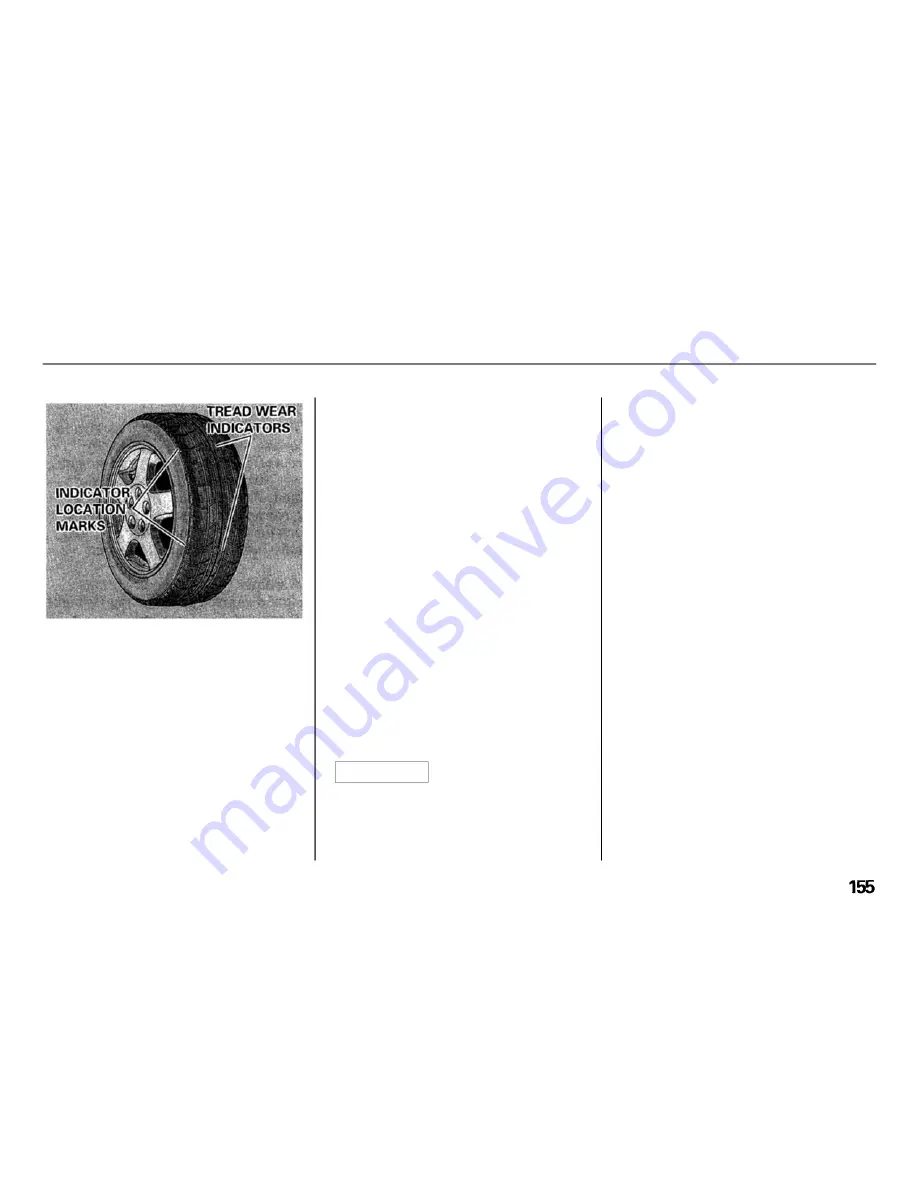
Tires
Your car's tires have wear indicators
molded into the tread. When the
tread wears down to that point, you
will see a 1/2 inch wide band running
across the tread. This shows there is
less than 1/16 inch of tread left on
the tire. A tire that is this worn gives
very little traction on wet roads. You
should replace the tire if you can see
the tread wear indicator in three or
more places around the tire.
Maintenance
In addition to proper inflation, correct
wheel alignment helps to decrease
tire wear. You should get your car's
wheel alignment checked every 12
months or 12,000 miles.
The tires were properly balanced by
the factory. They may need to be
rebalanced at some time before they
are worn out. Have your dealer check
the tires if you feel a consistent
vibration while driving. If you have a
good tire removed from the wheel
and later mounted, you should
always have it rebalanced.
Make sure the installer balances the
wheels when you have new tires
installed. This increases riding
comfort and tire life.
Improper wheel weights can damage
your car's aluminum wheels. Use
only genuine NSX wheel weights for
balancing.
Tire Rotation
You should not rotate your NSX's
tires. The front wheels are 15"
diameter and the rear wheels are 16"
so they cannot be rotated front-
to-rear. The original-equipment tires
on your NSX have a unidirectional
tread pattern, so they cannot be
rotated side-to-side.
Replacing Tires
The tires that came with your Acura
were selected to match the perform-
ance capabilities of the car and
provide the best combination of
handling and ride comfort.
If a tire becomes damaged, you
should replace it, not repair it. A
repaired tire will have lower perform-
ance limits. You should replace tires
with radial tires of the same size, load
range, and speed rating as the origi-
nal tires. Mixing radial and bias-ply
or bias-belted tires on your car can
reduce its braking ability, traction,
and steering accuracy.
CONTINUED
Maintenance
NOTICE






























